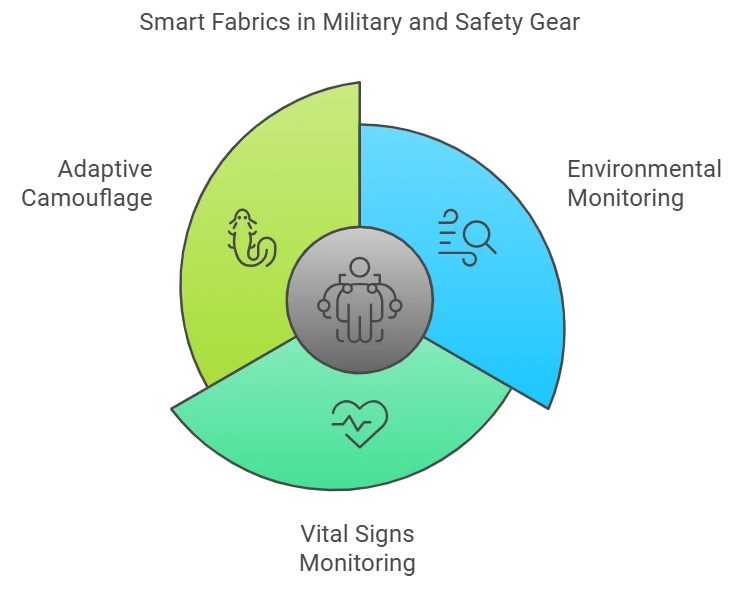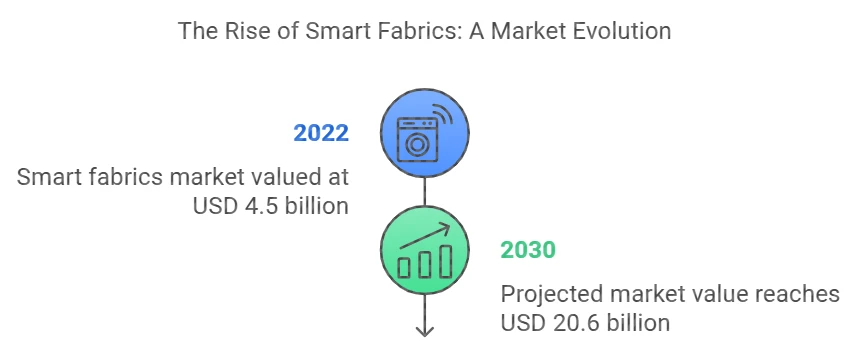Smart fabrics or intelligent textiles are materials that have been engineered to provide enhanced functionality and performance. Unlike traditional fabrics, smart fabrics can sense and react to environmental conditions or stimuli. They are often equipped with sensors, actuators, and conductive fibers, allowing them to interact with the environment in real time.
The applications of smart fabrics are diverse and wide-ranging. In the realm of healthcare, they are used to monitor physiological signs such as heart rate and body temperature, providing key data for patient care and safety. Athletes also benefit from smart fabrics, which can track performance metrics like movement, speed, and endurance, offering insights that help improve training regimens.
The application of smart fabrics in military and safety gear can provide information about an individual’s surroundings, such as detecting chemical threats or monitoring vital signs in real time. For example, smart uniforms embedded with sensors can help in diagnosing heat stress or other environmental hazards, ensuring the safety and well-being of soldiers. Additionally, fabrics that can change color or pattern in response to specific stimuli, such as temperature or light, offer exciting possibilities for protective clothing.

Smart fabrics also hold great promise for home and automotive textiles. They can enhance comfort and convenience, with features like temperature regulation, moisture-wicking properties, and even self-cleaning capabilities. Imagine car seats that can adjust to your body’s temperature or curtains that can block sunlight based on the time of day. These innovations are slowly becoming a reality thanks to advancements in smart textiles.
The smart fabrics market was valued at around USD 4.5 billion in 2022 and is projected to reach USD 20.6 billion by 2030, growing at a compound annual growth rate of 21.1%. In conclusion, smart fabrics represent a fascinating intersection of technology and textile design. As innovations continue to emerge, the potential uses of these fabrics will only expand. Their impact is already being felt in our lives today.
 Smart fabrics or intelligent textiles are materials that have been engineered to provide enhanced functionality and performance. Unlike traditional fabrics, smart fabrics can sense and react to environmental conditions or stimuli. They are often equipped with sensors, actuators, and conductive fibers, allowing them to interact with the environment in real time.
Smart fabrics or intelligent textiles are materials that have been engineered to provide enhanced functionality and performance. Unlike traditional fabrics, smart fabrics can sense and react to environmental conditions or stimuli. They are often equipped with sensors, actuators, and conductive fibers, allowing them to interact with the environment in real time.




